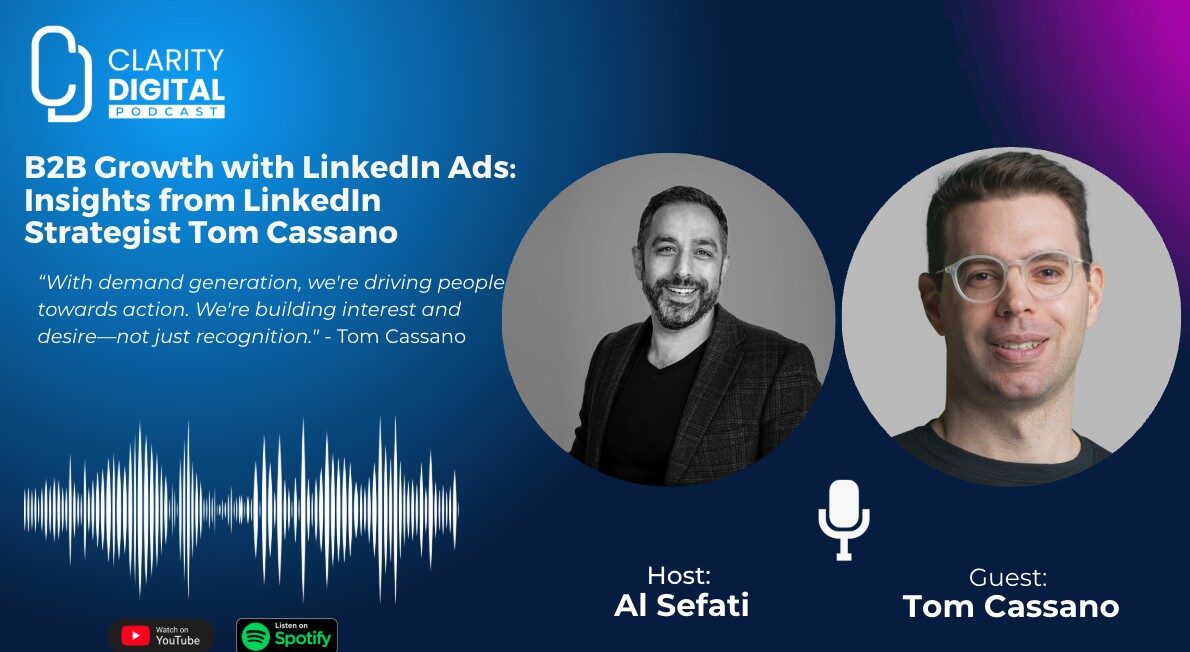In the latest episode of the Clarity Digital Podcast, Al Sefati sits down with Mark Kapczynski of Kontrol Media, a seasoned CMO and entrepreneur with a unique blend of corporate and startup experience. Together, they explore the evolving priorities for CMOs in 2025, offering invaluable insights into go-to-market strategies, retention as a growth strategy, and the smart use of AI in marketing.
Key Takeaways from the Podcast: Key Topics for CMOs to Prioritize in 2025 with Mark Kapczynski
pace requires a shift in perspective. This dual capability can unlock new revenue streams and strengthen brand partnerships.
Soft Skills for CMOs: Collaboration and Transparency
Mark underscored the importance of collaboration and transparency in today’s marketing landscape. With the increasing reliance on external teams—agencies, contractors, and technology partners—CMOs must foster an environment of teamwork and shared purpose.
Transparency, while sometimes uncomfortable, is crucial for building trust and enabling others to contribute effectively. Mark noted that being open about challenges or weaknesses can often lead to unexpected solutions and stronger results.
Actionable Advice for Aspiring CMOs
To wrap up the discussion, Mark shared advice for both seasoned and aspiring CMOs:
- Master First-Party Data – As third-party cookies phase out, owning and leveraging first-party data is no longer optional.
- Prioritize Video Content – Video is becoming the dominant format for engagement. Producing high-quality video content at scale can set brands apart.
- Embrace a Holistic View of Marketing – CMOs must look beyond traditional boundaries, taking ownership of areas like payments, support content, and customer retention.
- Focus on Empowerment – Effective CMOs empower their teams, both internal and external, to innovate and execute.
Closing Thoughts
Mark Kapczynski’s insights offer a compelling roadmap for CMOs navigating the complexities of 2025. From mastering retention to leveraging AI and exploring new media networks, the conversation highlights the evolving role of marketing leaders in driving growth and innovation.
Listen to the full podcast for more in-depth strategies and actionable advice to elevate your marketing in 2025!




